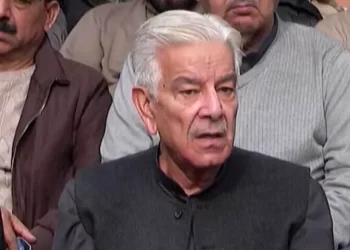Gaza’s Khan Younis is devastated, but its people have come back because it is also their home.
Fatmeh Abu Mustafa’s voice strains as she leans heavily on the walking stick in her left hand.
“We fled [Khan Younis] to al-Mawasi and stayed there,” the elderly woman says, seated on a pile of rubble, the black khimar framing her face fluttering lightly in the wind. Behind her, sunlight bounces off a cacophony of destroyed concrete pillars and metal.
“When the [Israeli] army pulled back, we came back to our homes but they were all destroyed. There’s nothing left at all.”
“We sleep on dirt,” Fatmeh says, exasperation dripping from every word. “What are we supposed to do now? Tell us. What do we do?”
Shortly after a Hamas-led operation in Israel on October 7 killed 1,139 people and took more than 200 captive, Israel launched an assault on Gaza.
It has killed more than 36,000 Palestinians to date with its air attacks and ground assaults.
Israel’s attacks in the early months of the war levelled most of Khan Younis in Gaza’s south, homes, roads, buildings, parks and more have all been destroyed.
The Israeli military withdrew in early April and Khan Younis became a refuge for the displaced, many of whom have had to flee multiple times, up and down Gaza.
An estimated 1.7 million people are sheltering in Khan Younis and Gaza’s central areas, including thousands who fled Khan Younis in those early months.
They have returned to where their lives once were, but have found only wreckage.
The destruction is so great that many landmarks disappeared and people struggled to identify where their homes were – nothing was recognisable any more.
Like Ismail Abu Madi, a grey-haired man, nut brown from the sun, clambering over the wreckage of his family’s five-storey structure that was flattened into one, surrounded by more rubble the war left behind.
“I’ve lived here for almost 60 years,” he says, gazing at the caved-in roof and tilting floors.
So much destruction, people are getting lost
He hung sheets over the exposed walls to try to keep the elements out, an attempt to make his former home as liveable as possible.
Some have likened the level of destruction in Khan Younis to a natural disaster, like an earthquake. But this was completely man-made, carried out by Israel as part of its war on Gaza.
“We don’t have water or food. I haven’t showered in a month.”
“We have nothing. Zero,” he says, standing next to a mattress hidden by the sheets.
Ismail’s home is no exception in Khan Younis. Panoramic shots of the area are little more than wide swaths of grey and sand.
The piles of destroyed homes, buildings that are no longer recognisable, and skeletons of structures still standing are at the same time alien and familiar.
People have trodden dust and dirt paths where roads used to be, between tall piles of rubble, an apocalyptic mimicry of a city’s streets.
One woman wearing a floral isdal draped over her body points towards the blown-out window of her home, its ornate metal grate twisted grotesquely for one side by the force of the weapons of war.
Through them, there is nothing but rubble, as far as the eye can see. Not a single structure remains standing around the house.
“You see the destruction?” the woman, who does not give media her name, says.
Her home’s skeleton is still standing, the walls mostly holes from air attacks.









